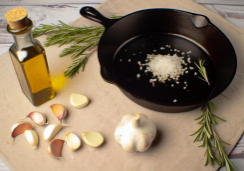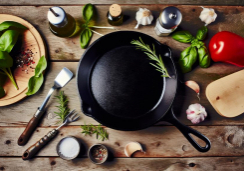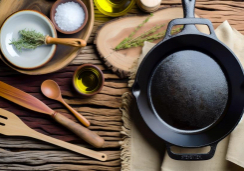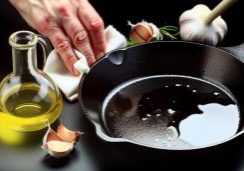Why Choose Gluten-Free Baking? Tips & Recipes
Imagine the aroma of freshly baked bread wafting through your kitchen, a scent so inviting it wraps around you like a warm blanket, but without the nagging worry of gluten-induced discomfort.
You've likely heard the buzz around gluten-free baking, and perhaps you're wondering if it's just a fleeting trend or a legitimate approach to healthier living. As someone who values what goes into your body, you'll find that choosing gluten-free baking isn't just about dodging gluten; it's about embracing a lifestyle that harmonizes with your dietary needs.
You'll discover that with the right guidance, you can create treats that rival their gluten-containing counterparts in both taste and texture. So, let's explore the cornerstone tips and delectable recipes that will transform your gluten-free baking from an experimental venture to a culinary triumph.
Stay tuned, as we unfold the secrets that will help you create heavenly gluten-free confections in your own kitchen.
Understanding Gluten-Free Flours
Navigating the diverse world of gluten-free flours is key to mastering the art of gluten-free baking, as each flour brings its distinct texture and flavor to your creations. You'll find that different gluten-free flours, such as almond flour and rice flour, can significantly alter the outcome of your gluten-free recipe. Unlike traditional wheat flour, which relies on gluten to develop structure, you'll need to use gluten-free alternatives that might require binders like xanthan gum or guar gum to mimic the properties of gluten.
When you're trying your hand at gluten-free baking recipes, it's crucial to understand that these flours aren't interchangeable one-for-one with wheat flour. Experimentation is essential. You might discover that gluten-free flour blends, which are carefully formulated to achieve a balance of texture and flavor, can simplify the process. These blends often include a mix of flours and starches that are designed to perform well together.
Be mindful when using gluten-free baking mixes, as they may already contain leavening agents. Paying attention to the composition of your flour blend or mix will save you from potential mishaps and ensure your baked goods turn out just right.
Measuring and Mixing Techniques
When measuring and mixing your gluten-free ingredients, it's crucial to take your time, as a longer mixing duration can lead to a stronger structure and better rise in your final product. Unlike traditional recipes, gluten-free baked goods don't become tough from overmixing.
Using a measuring cup, ensure you're precise with your gluten-free flour blend; gluten-free baking isn't an exact science, but starting with accurate measurements is essential.
Carefully mix your ingredients, understanding that gluten-free batters benefit from additional hydration. Letting your batter or dough rest for about 30 minutes before baking isn't just a suggestion—it's a beneficial step. This pause allows the flours and starches to fully absorb liquids, making your dough thicker and less sticky, which generally improves the texture of your baked goods.
Essential Gluten-Free Ingredients
Having covered the importance of precise measuring and mixing, let's now focus on the variety of gluten-free flours and binders that are fundamental to achieving the desired consistency and flavor in your baked goods.
When you're baking with gluten-free ingredients, it's essential to understand that each type of flour, such as rice flour, almond flour, and coconut flour, brings a unique texture and taste to the table. Bob's Red Mill offers an All-Purpose Flour blend that can simplify the process, particularly for those new to gluten-free baking.
For the binding factor that gluten typically provides, xanthan gum or guar gum are indispensable. They help prevent crumbly outcomes, ensuring that your gluten-free pancakes and other treats hold together beautifully. Remember that celiac disease requires strict adherence to a gluten-free diet, and these ingredients make it possible to enjoy baked goods without health risks.
Experimenting with the variety of gluten-free flours will help you find the perfect mix for your recipes. Potato starch and tapioca flour are also popular choices, known for their light textures. Adjusting the liquid in your recipes is crucial, as gluten-free flours tend to absorb more moisture.
These gluten-free baking tips should guide you to moist, delicious results every time.
Gluten-Free Recipe Adaptations
To successfully adapt your favorite recipes to be gluten-free, it's crucial to consider the unique properties and requirements of gluten-free ingredients. When baking gluten-free, you'll discover that flours made from rice, almond, or coconut behave differently from traditional wheat flour. For instance, they often require you to add additional leavening agents. A top gluten-free tip is using 2 teaspoons of baking powder per cup of gluten-free flour to ensure your baked goods rise properly.
Remember, making gluten-free recipes may need tweaks in moisture levels as well. Gluten-free flours tend to absorb more liquid, so you might need to add extra liquid to prevent your dishes from being too dry. This is particularly important in recipes like a gluten-free apple pie, where the filling needs to be moist and the crust flaky.
Store your gluten-free ingredients in the refrigerator or freezer to keep them fresh, which is especially important for flours that can go rancid quickly. And since baking times can vary, always use an oven thermometer to verify the temperature, ensuring your successful gluten-free creation is baked just right.
Baking and Storage Tips
Storing your gluten-free flours in airtight containers will significantly maintain their freshness and extend their shelf life. To further preserve their quality, consider refrigeration or freezing, especially for flours high in protein or fat, which can spoil faster. Always label and date your containers to keep track of their age and prevent waste.
When baking, use fresh ingredients like baking powder and baking soda to ensure your gluten-free creations rise appropriately. Lining your baking trays with parchment paper can help prevent sticking and make cleanup easier. Invest in an oven thermometer to verify your oven temperature, as accurate heat is crucial for successful gluten-free baking.
Since gluten-free doughs can be more delicate, you might need to adjust your baking approach. A lower temperature and longer baking times can yield better results, reducing the risk of drying out or burning. To enhance moisture, add ingredients like sour cream or olive oil. They'll contribute to a tender crumb and rich flavor.
And don't shy away from brown sugar; its moisture can be particularly beneficial in gluten-free recipes, providing both sweetness and a desirable texture to your baked goods.
Conclusion
In conclusion, you've got the power to create delectable gluten-free treats that rival traditional baked goods. Remember, choosing the right flours, mastering your measuring and mixing, stocking up on essential ingredients, and adapting recipes to your needs are key.
With a dash of patience and these savvy tips, your gluten-free baking won't just be a healthy alternative, but a mouthwatering success.
Happy baking, and don't forget to savor each gluten-free bite!










